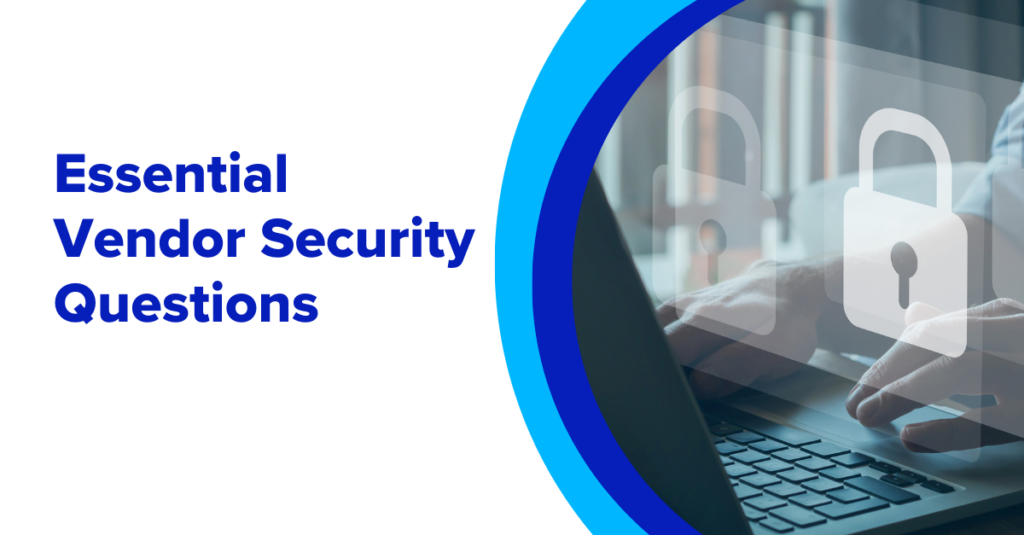6 Questions to Ask Your Remote Work Security Vendor

Businesses building BYOD workforces with remote employees, contractors and offshore workers know that this type of employment offers unprecedented opportunities for business scale and productivity. Yet, they also require IT and security solutions customized for their unique work habits. These can range from dedicated collaboration tools to tailored security platforms.
Choosing the right vendors will ensure that companies are:
- Protecting organizational data
- Following cybersecurity best practices for remote work
- Ensuring compliance
- Driving productivity
- Encouraging employee loyalty
- Protecting employee privacy
- And subsequently, supporting business operations.
This blog post aims to guide you through the questions to help you choose the right remote work security vendors for your BYOD security solutions. These six questions target the most essential aspects of remote work, covering everything from security to the user experience. We hope these will help you make an informed decision, ensuring your remote workforce operates securely and smoothly.
1. Do you support both Macs and PCs?
Our first question is not about networks or security or the business, but what remote work boils down to – the employee and their device. To create a positive work environment, employees need to be able to use the device they know, love and know how to operate. Letting employees use the device of their choice speaks volumes to the company’s HR policies, can reduce turnover rates and drives productivity.
But when it comes to choosing a device, not all users were created equal. Some like PCs, while others swear by their Mac. Yet, some remote work security solutions only support PCs.
As a result, BPOs or other companies with remote employees require workers to obtain a PC. In other cases, they might allow Mac users to keep using their Mac, but with a PC experience. This might result in disgruntled employees, slow down the onboarding process and impact employees’ ability to perform. To drive your business growth while ensuring secure remote access, choose a solution that supports Macs and any user-preferred device.
2. What happens if my employees don’t have bandwidth?
Moving on to the network and how employees connect to work resources. Remote employees often rely on varying degrees of internet connectivity and bandwidth. While you can enforce policies for minimum bandwidth, these can be hard to control in real-time. Sometimes situations are out of the hands of employees and contractors, especially in non-Western countries.
Some remote work security solutions, like VDI and DaaS, have horrible latency and throughput, making connections slow and sluggish. This is annoying for employees and non-productive. Even worse, if these employees’ main business is speaking with customers on the phone, you need a solution with minimal impact on call quality.
Choose a solution that is a VDI alternative, running reliably and smoothly without interruptions.
3. What security measures do you provide?
“Security” is a wide-encompassing term, covering aspects from network to endpoint to access to cloud to application and many more. There is no one security solution for all needs, so it’s important to ensure your chosen vendor complements and augments your security stack.
Since you are covering remote work, contractors and BYOD, your focus is not the cloud or application security, but rather the connection, the endpoint, and access and data protection for remote workers.
Ask your vendor how they secure:
- Connectivity between the user’s device and corporate resources. For example, do they employ a dedicated VPN? Is the connection encrypted?
- The endpoint itself, especially when it’s a BYOD. For example, do they check the device for compliance and basic hygiene? Can they remotely wipe the endpoint from corporate data at the click of a button? Is there a clear border and supporting policies differentiating public and private work on the device?
- Access to corporate resources. For example, is access managed?
4. Which remote employee compliance requirements do you meet?
After security comes security’s favorite cousin (or sibling) – compliance. Organizations across various industries must adhere to stringent data protection and privacy laws. These can be industry-specific, like HIPAA, PCI, NAIC or FINRA, or general, like SEC and SOC. Ensure the security solution meets the compliance standards relevant to your company. This will help you avoid fines, focus on your core operations and build trust with your own clients.
5. How easy is onboarding and offboarding?
The ability to easily deploy the solution to employees and to offboard them when they finish working is critical for the success of a remote work security solution. As a rule of thumb, employees don’t like systems that interfere with their workflows and workloads. For remote employees who communicate with IT through chats and calls, this is all the more true. If the solution isn’t easy for onboarding and offboarding, it just won’t be implemented.
However, many solutions don’t understand the importance of this experience. They provide cumbersome, multi-step processes, requiring high IT maintenance and employee involvement, creating frustration and severely denting productivity.
Choose a solution that can be easily deployed via a link, a click, or a quick download. For offboarding, go with self-uninstalling. When an employee leaves, on good terms or bad terms, you don’t want to be relying on them to revoke access and connectivity to your IP.
This is also useful if employees suddenly switch devices. There’s always that employee who spills coffee over their PC (me? Nah. not me…). Easy deployment lets them get back into it, quickly and efficiently.
6. What user experience will my IT team get?
We started this blog post by talking about the employee user experience, and we’ll finish up with the IT experience, because IT are the heroes of remote work. IT deserves a modern and intuitive user experience, just like any other end-user. This enhances their experience and drives productivity.
However, many security solutions provide a dated experience, with old-fashioned and inconvenient UIs and sluggish workflows, making daily work frustrating and discouraging adoption. In addition, IT teams are often forced to spend long hours working as a logistics company, setting up and shipping devices to remote employees. Or, they are wasting their weekends and valuable work time answering tickets from users upset with slow VDI connections or trying to maintain its complex back-end.
Make sure the security solution is simple to use for users, can be easily deployed on any device, BYOD included, and has an innovative and intuitive user experience for IT, aligned with the latest practices. This will ensure it is properly used and adopted, making them happy. And when IT is happy, your business grows and glows.
Get to Know Venn
Venn stands out as the answer to many pressing questions organizations have when choosing a remote work security vendor to enable their BYOD workforces.
Venn secures remote work on any unmanaged or BYOD computer with a radically simplified and less costly solution than virtual desktops or having to lock down every PC. Similar to an MDM solution but for laptops – work lives in a company-controlled Secure Enclave installed on the user’s PC or Mac, where all data is encrypted and access is managed.
Work applications run locally within the enclave – visually indicated by the Blue Border™ – where business activity is isolated and protected from any personal use on the same computer. Company data is now protected without having to control the entire device, and as a result, remote work is secured without the cost, complexity and performance issues of VDI.
With quick onboarding and onboarding and a modern user experience, both IT and employees can use Venn without disruptions to their workflows or overhead
Over 700 security and compliance-driven organizations, including Fidelity, Guardian, and Voya, trust Venn to meet FINRA, SEC, NAIC, HIPAA, SEC, PCI and SOC 2 standards.
To learn more, visit venn.com.
More Blogs


